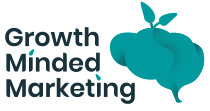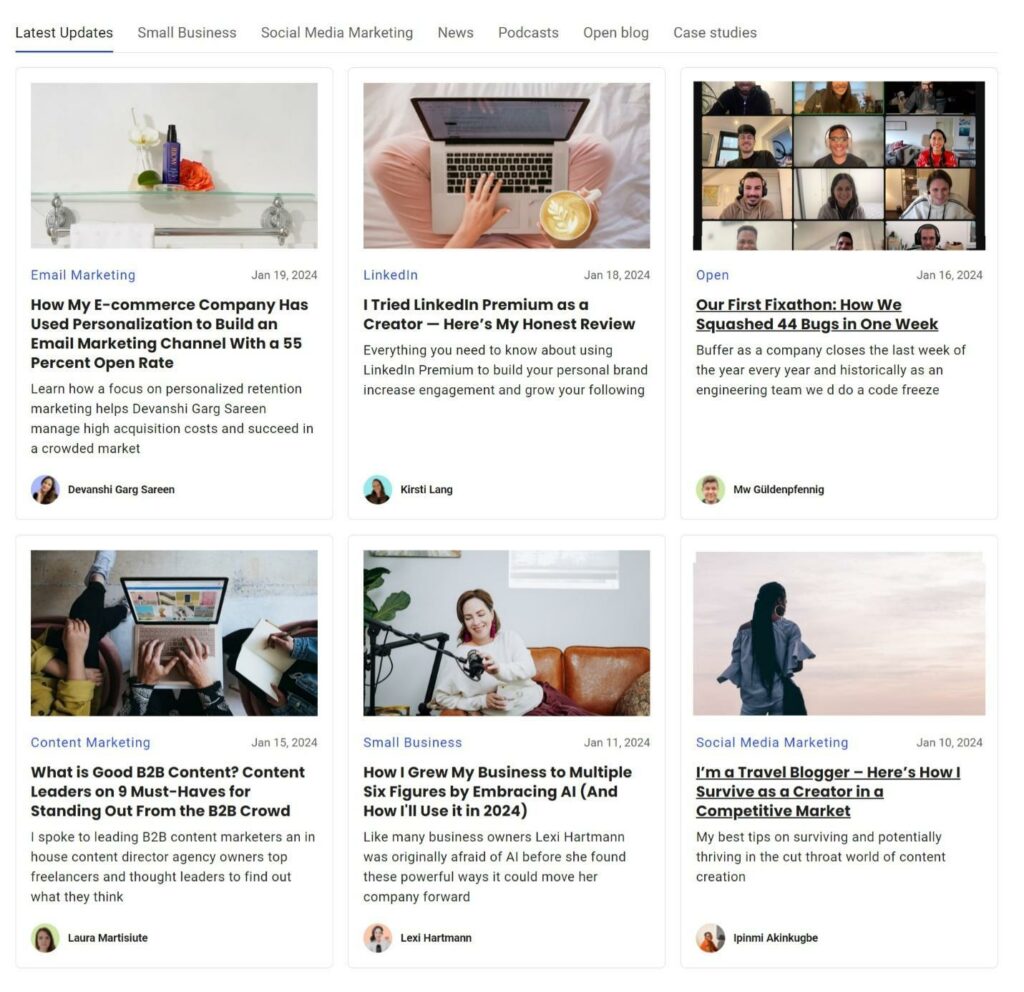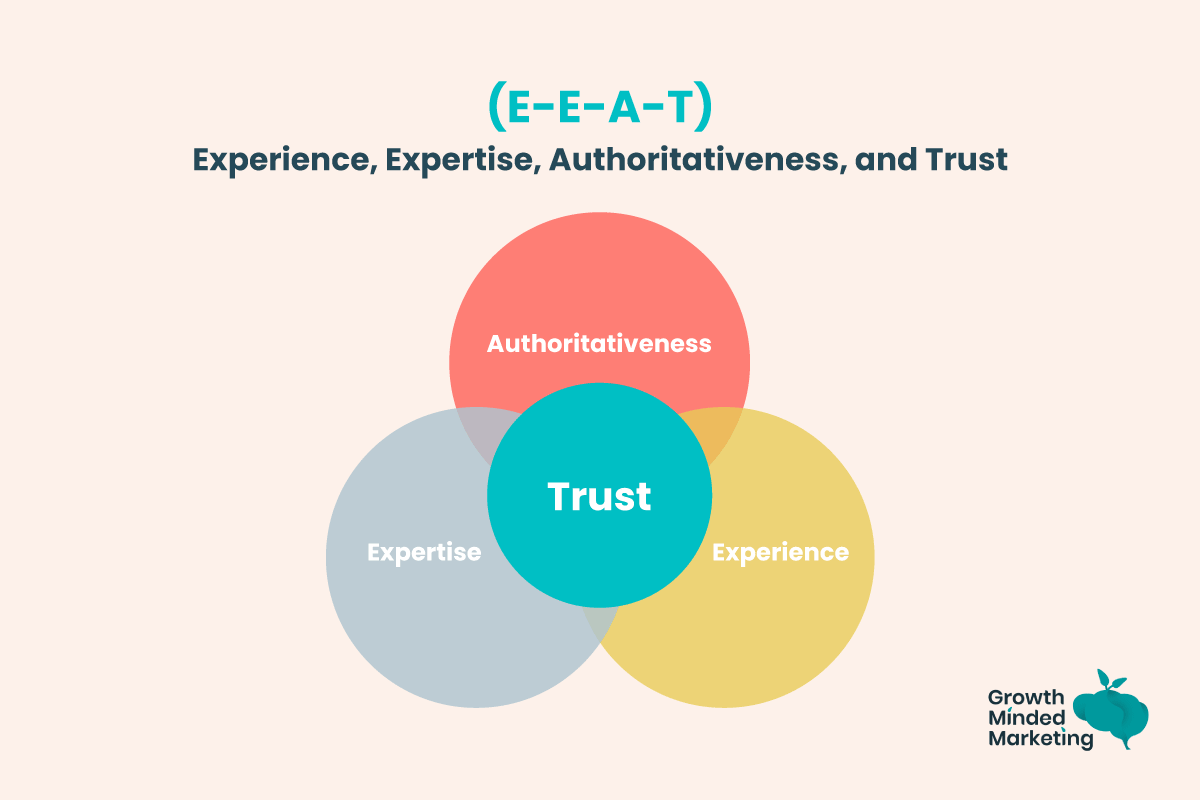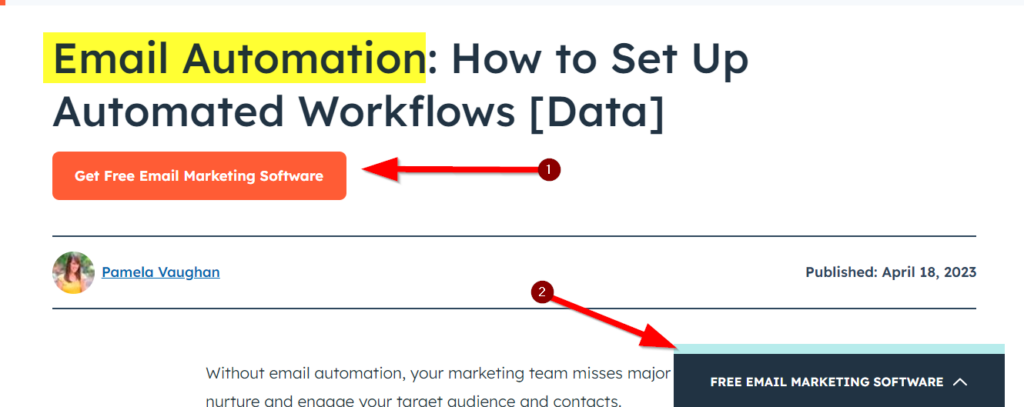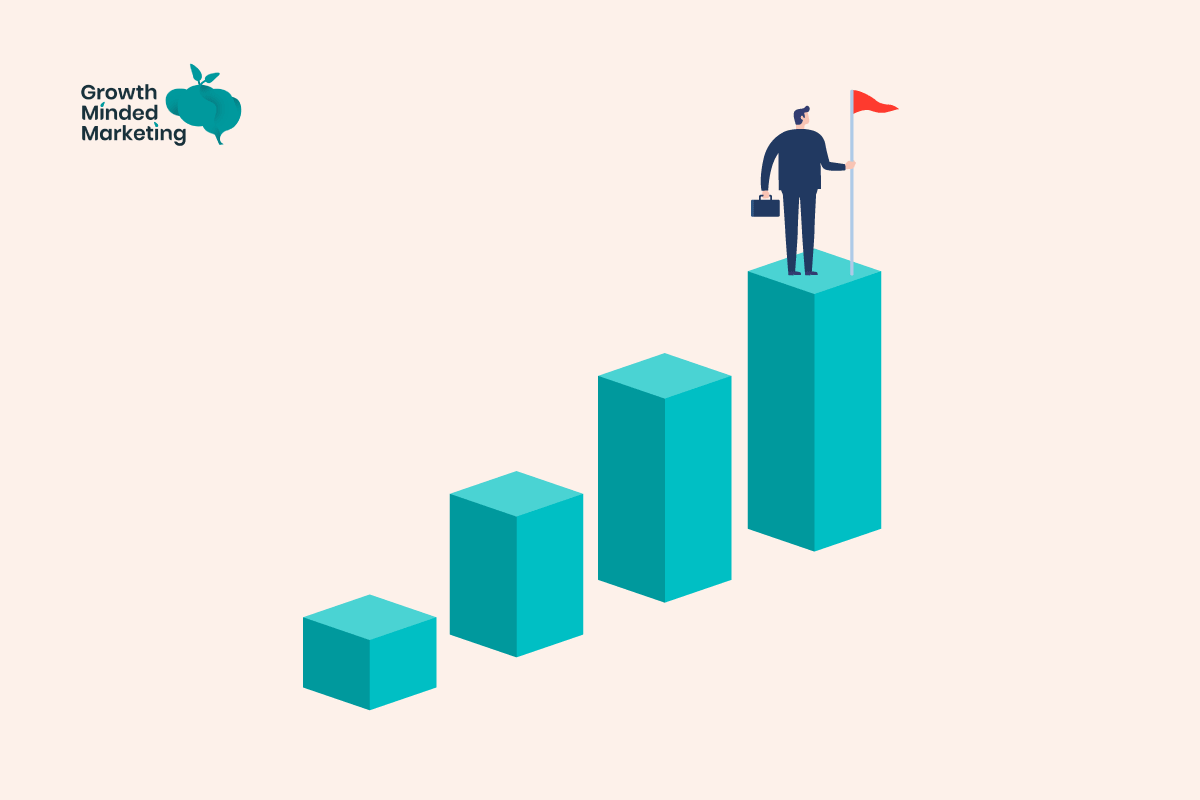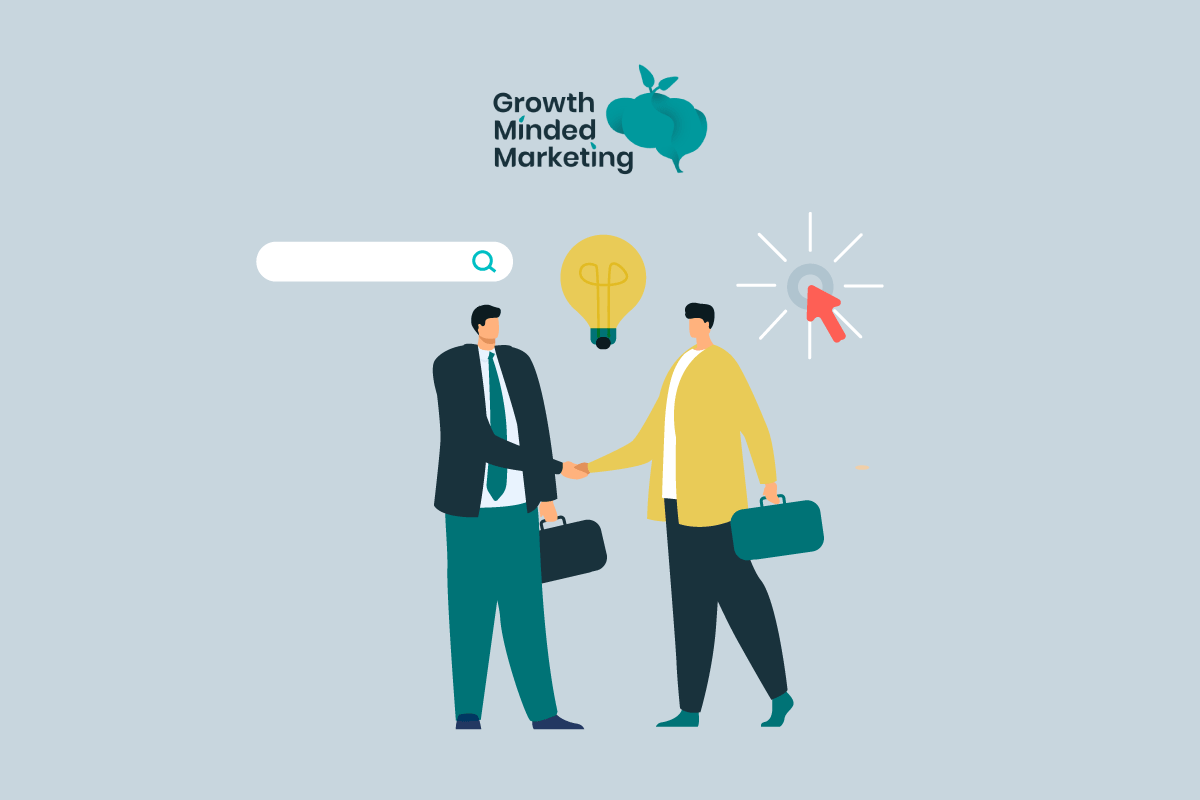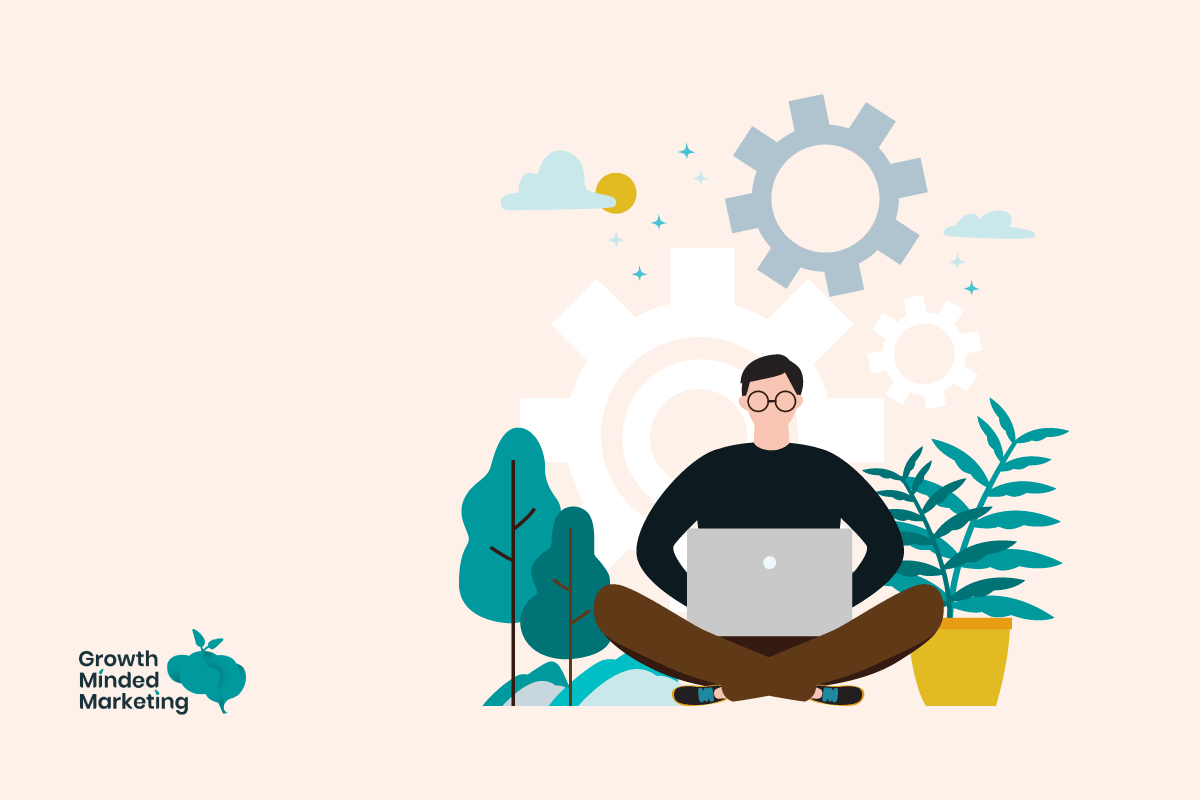Growing a software company is challenging.
Most SaaS companies have two big problems. One is consistent sales with a decent CLV (Customer Lifetime Value). The other is maintaining a low churn rate.
The most important variable for SaaS success is finding the right and cost-effective customer acquisition channel, that keeps CLV significantly high.
In a hunt for ‘free’ traffic, most SaaS companies switch to SEO and soon realise that things aren’t as simple as they seem on the surface.
Being found on page 1 of Google isn’t a piece of cake. You need proper keyword research, an optimised funnel, on-page and off-page SEO, and much more to be successful with SaaS SEO.
This article uncovers SaaS SEO, its importance for businesses, and how to create a SaaS SEO strategy that will provide sustainable growth to your software company.
Table of Contents
ToggleWhat is SaaS SEO?
SaaS SEO refers to the systematic process of optimising a SaaS website’s ranking in search engines.
It includes SEO techniques that help software companies improve search visibility and drive more organic traffic to their websites.
SaaS businesses typically have a subscription-based software product. This means they have few content-rich webpages. In contrast, ecommerce or retail sites have many product pages.
It makes SEO different for SaaS websites than other content-rich sites. Buyer journey and content funnel for SaaS customers is also unique that requires a well-thought data-driven SEO strategy.
SEO for SaaS companies includes both on-page and off-page and it follows all the basics. The way you devise your optimisation strategy makes it a bit different.
Why is SEO important for SaaS businesses?
Search engine optimisation is essential for software companies for multiple reasons as discussed below:
Content dependence
SaaS brands depend on content heavily to reach their target audience. This is because they sell a single product and it gets challenging to pitch it to the same audience in different ways.
Most SaaS companies use content to educate their target audience. They also use it to build relationships and develop authority.
Content requires SEO.
Buffer, for example, has a small but effective social media management app. It drives heaps of organic traffic by ranking for hundreds of keywords.
It has built significant authority by publishing content across multiple categories such as social media marketing, small businesses, content marketing, email marketing, and others:
Reaching your audience via content and SEO is one of the best growth strategies for SaaS businesses and it’s more of a requirement than an option.
Cost-effective
Search engine optimisation is affordable and works perfectly with PPC campaigns. When you run paid ads for your SaaS company to generate traffic, SEO is a good complement. It allows the site to rank for less bottom-of-the-funnel types of queries, which are typically not targeted by PPC campaigns. SEO takes time to deliver results.
It takes an average of 3-6 months for SEO to show results:
While you are investing in SEO for your SaaS company, you can’t sit back and wait for your content to hit page one and generate traffic and conversions. That’s suicidal.
Using PPC and SEO together works great as a combination for new and established software businesses.
Consistent traffic
If you need consistent traffic and sustainable growth for your SaaS brand, SEO is your best bet. SEO traffic is sustainable in two ways.
First, SEO traffic is generated by search queries. The number of searches per month might fluctuate but rarely declines.
If you target evergreen keywords, the searches per month will be consistent. It’s not possible to always target evergreen keywords which means you’ll have a mix of keywords that drive consistent traffic year over year along with seasonal content.
On the other hand, traffic from social platforms is quite inconsistent and depends on trends. Referral traffic fluctuates with the popularity of the host site such as Quora or Reddit. Organic traffic does flucture but its mostly consistent YOY.
Second, you continue to receive organic traffic for years to come (and as long as your blog and content are live).
In fact, the older your content gets, the better it ranks. Your domain authority increases over time and you’ll acquire more links with the passage of time. This significantly improves the ranking of old content.
Here’s a catch: You need to update content to keep it relevant. It’s necessary to refresh old content to add new facts, statistics, and updated information. This will avoid getting outranked by competitors who are publishing fresher, up to date content.
While SEO traffic is sustainable, you have to audit content on regular basis to update and refresh it to maintain rankings.
Additional touchpoint
The first place people head to when they are looking for something is a search engine. This makes search engine optimisation a must-have as it acts as the key to the most popular touchpoint.
A study revealed that it takes up to 8 touches to generate a conversion which gets even higher for the SaaS sector.
It’s a highly competitive market. Most SaaS companies use free trials or freemium models to attract visitors. Therefore, you need multiple touches across different touch points to generate conversions.
Improved omnichannel marketing
SEO is a must-have for an omnichannel experience that is known to boost revenue significantly.
A study reported that omnichannel campaigns increase order rates by 494% compared to single-channel campaigns.
You can’t offer a complete omnichannel marketing experience to your SaaS audience without SEO because search engines are the first place a potential buyer looks at. A study reported that up to 32% of people begin their search via a search engine when they know the type of product they want to buy:
Imagine your target customers search for your software in Google and they don’t find your website or content. You will lose a lot of customers and this will make other marketing channels ineffective.
Further Reading
How to create a strong SaaS SEO strategy
Here’s how you can create a successful SaaS SEO strategy for your business:
1. Set goals
A clear understanding of what you want to achieve with your SaaS SEO strategy makes it easy to set goals, plan, and identify the right metrics to track SEO performance.
For example, you can set a goal to increase organic traffic or you can use SEO to boost brand awareness.
Having a formal SEO goal for your SaaS company keeps your team on a single page and everyone in the marketing department knows what they are trying to achieve.
The best way to set realistic and achievable goals is to use the SMART goal approach. It focuses on setting a specific, measurable, achievable, relevant, and time-bound goal that looks like this: “To double organic traffic in 5 months.”
Starting with a SMART goal helps your SaaS business in two ways:
- You know what exactly you want to achieve from SEO. Knowing where to go solves half the problem.
- You can use accurate metrics and KPIs to track performance.
Ideally, the primary goal of any SaaS SEO strategy is to generate more organic traffic. This is usually followed by increasing organic conversion rate, increasing organic CTR, building authority, and acquiring backlinks.
Avoid setting goals that are too broad. Be specific and focused. The more focused your SEO goal is, the better.
Don’t try to achieve everything altogether.
2. Keyword research
SEO relies on keywords because that’s how search engines work. Keyword research is the backbone of your SaaS SEO strategy. It lays the foundation and everything depends on the keywords you are targeting.
The most important part of SaaS keyword research for SEO is finding the right keyword intent based on the funnel stage.
A lot of transactional keywords are informational keywords in SaaS and it often gets confusing. Identifying the right intent is critical. Here’s an example of an informational keyword that looks transactional:
If you end up optimising your home page for ‘project management tool’, it is least likely to work as Google and searchers are looking for a list of different apps.
People use branded keywords when they are interested in buying a SaaS tool and that’s what a transactional keyword is.
Once you have a list of keywords, prioritise them based on value.
High-value keywords:
- Target your ideal customers precisely
- Have a high search CPC and you can’t bid (or outbid) it
- Are closely related to your software.
Analysing your competitors is the second phase of keyword research. Competitor analysis reveals keywords that you might have missed during the research process. It also helps you identify keyword or content gaps.
Keyword gap refers to the keywords that your competitors are targeting but you aren’t. Identifying, screening, and prioritising these keywords is important to establish trustworthiness (a major component of E-E-AT).
Google determines it based on experience, expertise, and authoritativeness by using a wide range of signals and factors.
If your competitor is considered trustworthy by Google and it ranks for multiple keywords in your domain, it’s highly likely that covering those keywords will make you appear trustworthy as well.
This can be best achieved by identifying and filling the content gap by prioritising the most valuable keywords.
You can use leading keyword research tools to find content gaps as we have covered in our keyword in SEO article.
Find out how our SEO management services can help your business grow.
3. Generate topic clusters
A topic cluster refers to a group of pages that target a specific topic. Having clearly defined clusters improves your site’s structure, authority, and SEO.
Here’s an example of a topic cluster:
A topic cluster has a pillar page and cluster content (or cluster pages). The pillar page is the main page that covers the topic in detail while cluster pages target sub-topics.
Here’s a practical example of how it works:
Instead of creating content randomly on selected keywords, you need to regroup keywords based on topics.
Identify major topic areas that you want to cover and prioritise them.
Here’s how you should create topic clusters for SEO:
- Group keywords into topics
- Link topics to your sales funnel and buyer journey. Ensure that topic clusters cover the entire funnel
- Prioritise topics based on their value. For example, topics that are easy to rank and are transactional should be your top priority
- Make sure each topic cluster has one pillar page that covers the topic in detail
- Define your interlinking strategy where each cluster page should link to its pillar page and vice versa
- Each topic cluster should have at least one landing page (more on this in the next section).
4. Content creation
It’s time to create content based on topic clusters.
SaaS companies, as discussed above, rely heavily on content because you don’t have a massive list of products like ecommerce stores.
You need high-quality content that educates your ideal customers.
And your content has to be better than competitors.
Here are a few ways to make your content better than existing content out there:
- Cover the topic in more detail by covering every single aspect
- Add a new point of view or angle to the topic
- Create content in more than one format such as an infographic embedded in a blog post or a video and blog post
- Demonstrate experience by having content written by someone who has practical, verifiable experience on the topic. For example, a scrum master should write an article on agile development
- Write content for humans.
Creating quality blog posts will help you drive targeted traffic from search engines. You need landing pages to convert these visitors.
A landing page pushes visitors to your sales funnel by collecting email addresses and that’s how you can nurture leads.
Every cluster topic should have at least one landing page. All the posts from that topic should have a CTA directing visitors to the relevant landing page.
Here’s an example from HubSpot that relevant landing pages across all its blog posts:
The CTAs, in this case, are relevant to the topic which significantly increases CTR and conversions. Generic landing pages don’t work so don’t waste your time creating an all-purpose landing page. Get personalised.
You can use programmatic SEO to create extremely targeted landing pages at scale.
Read our guide on how to do programmatic SEO in 4 simple steps.
5. Content optimisation
Publishing great content isn’t enough for SaaS SEO, you need to go the extra mile by optimising it for search engines.
Content optimisation has to be embedded and aligned with the content publication process so that you don’t have to incorporate on-page SEO for every single post.
This is another reason why having an editorial calendar helps. It streamlines publication and optimisation processes.
Content optimisation has two parts:
- Optimising content for users with a focus on improving UX
- Optimising content for search engines so they can easily crawl, index, and rank it.
Let’s start with optimisation for readers as that’s the key to a successful SaaS SEO strategy. Here’s a list of techniques you must use:
- Make content reader-friendly by properly formatting it. This includes short paragraphs, short sentences, and use of bullets and lists
- Write in simple language that’s understandable. It means avoiding jargon and technical terms or making sure that they are properly explained
- Add images and graphics to convey your message as images increase comprehension by 400%
- Avoid writing big chunks of content with no headings and subheadings. It makes content boring and hard to read online
- Add white space as much as you can as it improves visual appearance and increases visual attention by 45%
- Write content for skimmers as most people don’t read word for word. A whopping 73% of people skim online content while only 27% read it thoroughly. To accomplish this, write descriptive headings and subheadings, bold important text, include a table of contents, summarise key takeaways, and share the main points at the beginning of the article.
- Improve UX by having a responsive website design.
Here’s a list of optimisation techniques for search engines specifically:
- Use meta tags including title tag, description, heading tags, and alt tags. These HTML tags help crawlers understand the content
- Structure your SaaS website with a clearly defined hierarchy and navigation. Ensure there are no orphan pages
- Improve internal linking to pass link juice to pillar pages
- Increase site speed and improve core web vitals which is now an essential ranking factor.
6. Acquire backlinks
Generating backlinks for your content can improve rankings and accelerate the time it takes for an article to reach its peak organic popularity – especially in a competitive market.
Acquiring backlinks from quality referring domains in your niche will improve your website authority and make it easier and faster for your landing pages to reach the top of the SERP.
Here are the top ways to generate backlinks to improve SaaS website ranking:
- Write guest posts on relevant blogs and sites
- Share your best content with bloggers so they can link to it naturally while creating new content for their blogs
- Use the skyscraper technique that focuses on creating linkable assets and then reaching to people who have already linked to similar content
- Create more linkable assets such as infographics, case studies, white papers, interactive content, and other forms of content that your competitors aren’t generating as often
- Use the broken link technique to find links that are leading to a 404 page and pitch your content as an alternate
- Analyse your competitor’s backlink profile and use it as a benchmark. Sites that are linking to your competitor are likely to link to your assets as well
- Have an outreach strategy where you send emails daily to potential sites
- Build and grow your network and connections. It is your best resource to get backlinks with the least effort.
Find out how our SEO management services can help your business grow.
Conclusion
Once your SaaS SEO strategy is implemented, tracking its performance and making necessary tweaks should be your top priority. You can’t let it run forever without checks and optimisation.
Ideally, you should reassess SEO strategy for your SaaS business every 6 months. If it is doing well, great. Optimise and improve it by doing more of what’s working.
If you aren’t getting desired results, analyse and see what’s wrong. Use data to figure out what’s wrong and how to fix it.
Continuously monitoring and revising the SaaS SEO strategy will deliver the best results.
A successful SaaS SEO strategy isn’t just about execution. Rather, it’s more about regular data-driven monitoring and performance checks.
It requires proper planning, implementation, execution, and monitoring. Miss one phase and you’ll keep moving in circles.
If you don’t want to struggle with any phase of your SaaS SEO strategy and need experts to handle it for you, book a call with a growth strategist today.

Find out how our SEO management services can help your business grow in 2024
